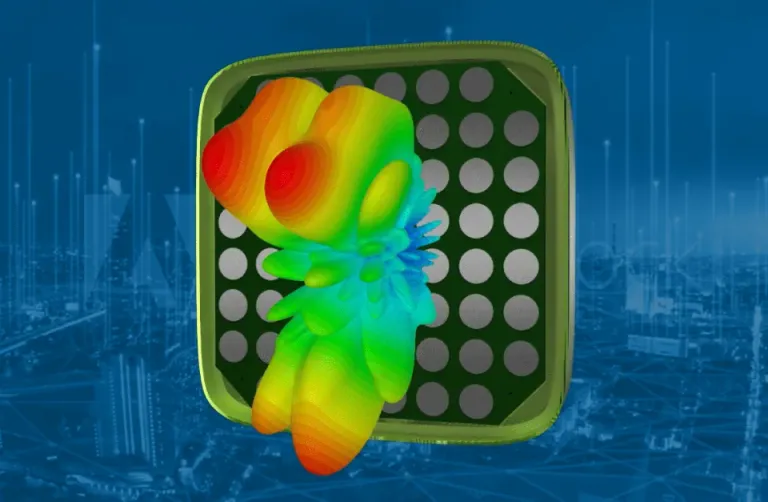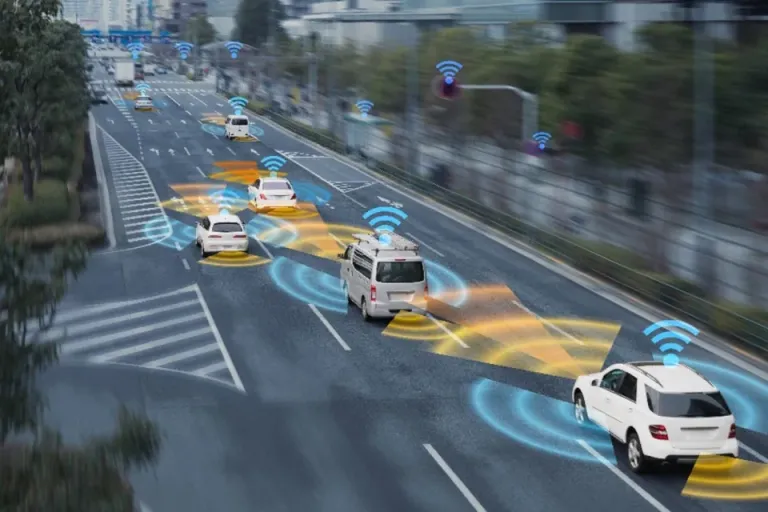Connected Systems Simulation
Simulation of Connected Systems and Devices Enables Efficient Product Design and Certification
5G/6G Simulation Enables Efficient Product Design and Certification
5G communication systems promise extremely high bandwidth connections, ultra-reliable low-latency communication (URLLC) links for real time communication and interaction, and support for huge numbers of connected devices in small areas. Beyond just providing faster internet access to more users, 5G communication enables new ways of doing business across industries, from enhanced IIoT (Industrial Internet of Things) enabled smart manufacturing to safe autonomous driving and remote surgery.
5G device manufacturers and network infrastructure providers have the challenging task of delivering the expected high performance in a short time, to cost, and without compromising compliance and safety standards. The technological challenges faced by companies investing in these areas are significant and many engineering problems remain unsolved.
5G/6G Communication Device Design Requires Multi-Physics Simulation
Ubiquitous 5G communication links at sub-6 GHz and mm-wave frequency ranges require the use of massive MIMO (multiple input multiple output) and antenna array technology. These technologies are used both in small cell base stations and user equipment like smartphones.
Adding support for 5G communication standards to already crowded compact devices places huge pressure on engineers. They must provide innovative high-performance solutions that do not create electromagnetic compatibility or electromagnetic interference (EMC/EMI) issues like desense of other communication systems. Devices that are more densely packed require more attention to thermal performance. Components operating at mm-wave frequencies also need finer mechanical tolerances. These factors increase the need for well-integrated multi-physics and multi-domain product design.
Accurate 5G simulation, across physics and at all stages of the design process, from early concept exploration to virtual compliance testing, is essential. The extensive Dassault Systèmes SIMULIA portfolio of simulation technology has multi-physics technology for a complete 5G system design. These include mechanical, structural and stress analysis with Abaqus, electromagnetic simulation with CST Studio Suite technology, and other tools for thermal, fatigue and system simulation. This technology, supported by the 3DEXPERIENCE platform, enables collaboration across teams. Simulation allows competitive products to be brought to market on time and on budget, despite the increased challenges posed by designing for 5G communication.
From 5G to 6G
As the successor to the 5G network, 6G technology represents a revolutionary leap in mobile networks, promising substantial advancements in data rates, latency, connectivity, and network performance. In the race towards 6G, key areas of focus include achieving ultra-high data rates possibly in terabits per second, significantly reducing latency for instantaneous response times, supporting massive connectivity for IoT devices, exploring higher frequency bands for increased capacity, introducing new network architectures, and integrating advanced AI and machine learning technologies for optimized performance. Additionally, 6G aims to prioritize sustainability and energy efficiency while offering increased capacity, reliability, and security. Despite the challenges such as spectrum availability, technological advancement, and costs, the journey towards 6G continues with anticipated commercial deployment in the 2030s.
In these development stages, simulation plays a pivotal role. It allows experts to model and test the complex systems underpinning 6G, experimenting with variables, predicting outcomes, and refining technologies, which helps to mitigate risks, drive innovation, and accelerate time to market.
5G Telecommunications Infrastructure
Telecommunications infrastructure ensures that your data is picked up, transported and delivered to the right addressee. In 5G mobile communications the entrance to the infrastructure is represented by a base station. The base station picks up the signal from a mobile phone through an antenna array. Being able to simulate and predict installed performance of the antenna array as well as interference with other communication devices ensures continuous connectivity.
Smart Factory and Manufacturing IIoT
The Industrial Internet of Things (IIoT) and private networks offer unprecedented connectivity and data exchange capabilities for the digital transformation of industries. IIoT leverages connected devices and sensors to collect vast amounts of data from industrial equipment, which, when analyzed, can lead to improved efficiency, predictive maintenance, and innovative services. Private networks provide the dedicated bandwidth and low-latency communication necessary for real-time industrial applications, ensuring reliable and secure data transmission. However, developing and deploying IIoT solutions over private networks pose significant challenges, including complex integration, scalability, and security concerns. Simulation helps mitigating these issues by allowing engineers to model IIoT environments and network conditions accurately. Through simulation, developers can test and refine their designs in a controlled, virtual setting before actual deployment, thereby reducing development time, cost, and the risk of failure. Furthermore, simulation aids in identifying potential security vulnerabilities and performance bottlenecks, ensuring that the IIoT solutions are robust, secure, and scalable.
The 3DEXPERIENCE® platform offers a data-driven, model-based approach for managing 5G development complexity, facilitating virtual prototyping to mitigate risks in introducing the IIoT.
ADAS & Autonomous Driving
ADAS systems require full knowledge of their surroundings to safely control a vehicle. This means everything from lane markings and signs to road conditions, other vehicles, road users, and unexpected obstacles. To achieve this, cars are equipped with a range of sensors, such as cameras, radar and lidar ranging systems, geolocation, and other devices. High-speed mobile data connectivity, such as robust 5G, is also essential for ADAS systems to connect with internet services, smart road infrastructure, other vehicles, and passengers' devices. However, it's important to note that the components making up these systems are sensitive to interference from other antennas and electronics, dirt and snow soiling, and placement effects. Therefore, it's crucial to address all these factors at the system level to design safe and reliable ADAS and autonomous drive systems.
Wearables
The development of wearable tech like smartwatches and fitness trackers involves challenges such as miniaturization, power efficiency, seamless connectivity, and optimizing antenna design andplacement. Simulation is key for tackling these issues, allowing designers to refine prototypes virtually before making physical versions. By using simulation, engineers can ensure electromagnetic compatibility (EMC) of wearables for interference-free operation in connected environments. It's also vital for checking specific absorption rate (SAR) levels to keep electromagnetic field exposure within safe limits. Simulations help with thermal management of the device. Therefore, simulation is essential in wearable tech development, driving innovation while ensuring safety, functionality and user satisfaction.
Customer Case Studies
Learn how leading companies use SIMULIA simulation solutions to design and optimize connected communication systems.
5G Antenna Design and Simulation
Antenna design and simulation play a critical role in developing connected systems, ensuring that devices can communicate effectively in increasingly complex environments. The process involves leveraging advanced electromagnetic simulation to analyze antenna radiation patterns, impedance, and bandwidth. Simulations facilitate optimizing antenna designs for specific applications, from mobile communications to satellite networks, before physical prototypes are built. By identifying potential design issues early on, simulation saves time and resources, enabling engineers to refine antenna configurations to meet stringent requirements.
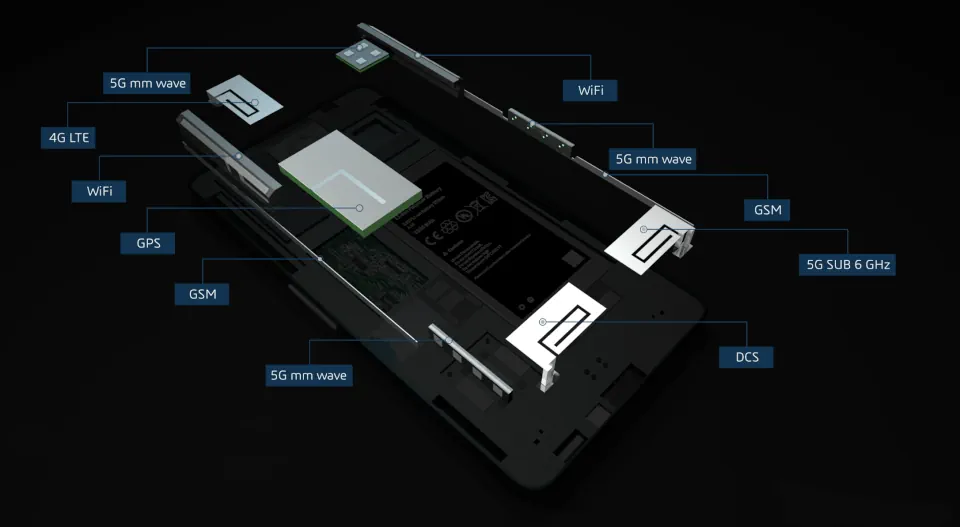
Antenna Placement
Antenna placement is a critical factor in the design and deployment of connected systems. Any given environment can significantly influence the radiation patterns of the antennas and, by extension, the performance of these systems. Housings, mounting systems and any object or shape can all alter the way radio waves propagate, affecting signal strength and coverage. Efficient electromagnetic simulation tools provide a sophisticated help analyzing platform effects on antenna behavior before physical installation. By simulating the interaction between antennas and their surroundings, designers can optimizate the antenna placement to achieve the best possible coverage and performance.
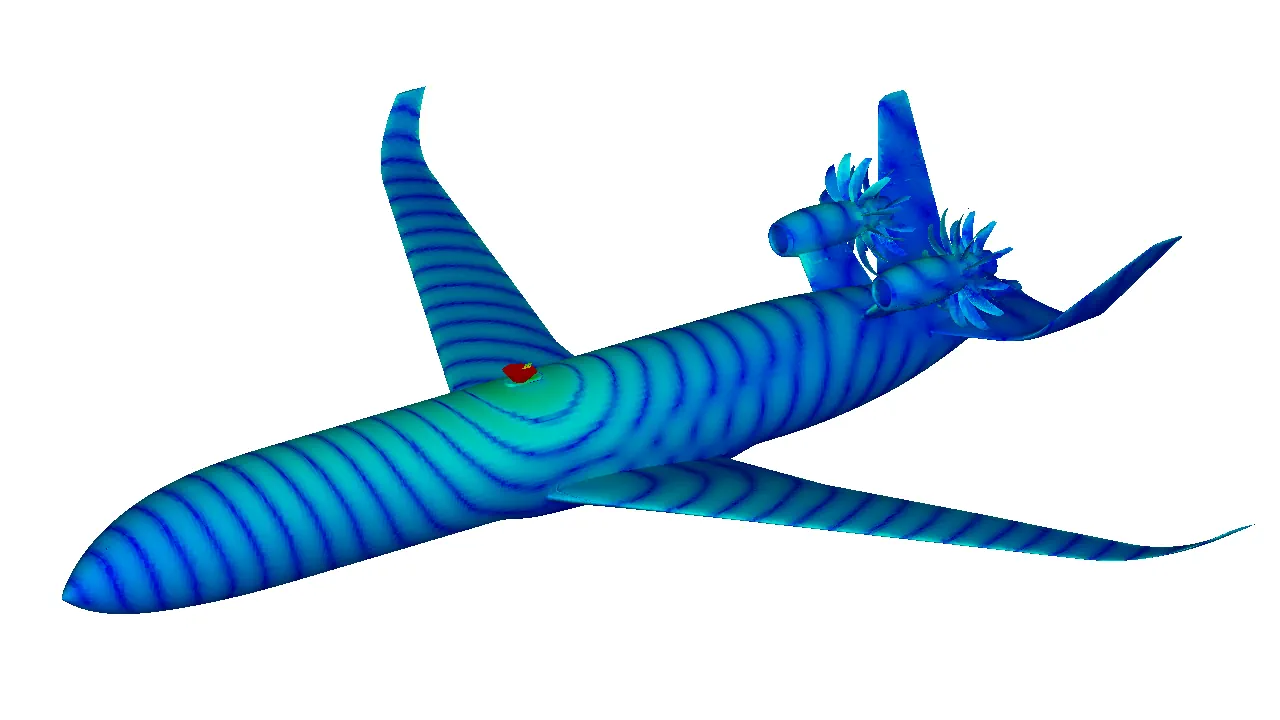
Coverage Simulation
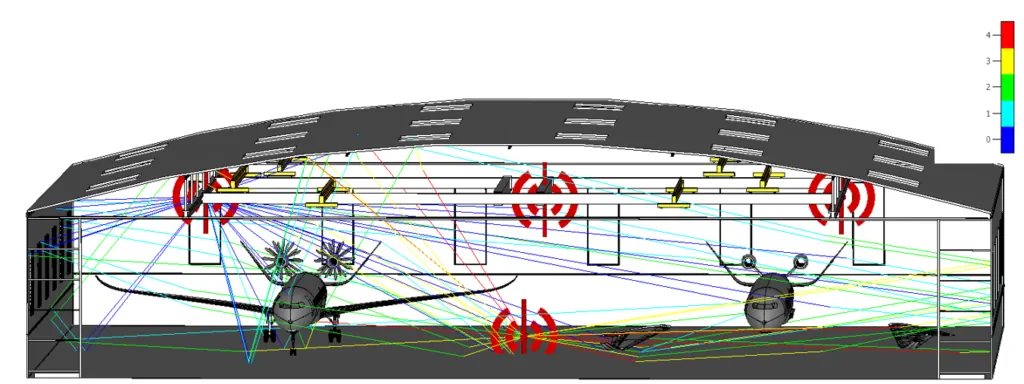
Coverage simulation for connected systems is a key process in ensuring that communications networks deliver optimal performance. Depending on the application area the environments can be interior spaces of buildings and workshops, or factory sites, cities and territories. Efficient simulation tools allow engineers and system designers to virtually map out and test the propagation of waves through these diverse environments. Based on the realistic radiation characteristics of the installed antennas, simulation analyzes how signals interact with physical structures, natural landscapes, and atmospheric conditions. Simulation can predict areas of signal weakness or interference and identify the most effective locations for placing antennas and other communications infrastructure, ensuring that coverage is both comprehensive and consistent. Through the use of such simulation technologies, network planners can dramatically improve the reliability and effectiveness of connected systems, minimizing dead zones and optimizing connectivity for end-users in all targeted areas.
EMC/EMI Simulation
In today's technological landscape, devices must function seamlessly in the same electromagnetic spectrum. Electromagnetic compatibility (EMC) and electromagnetic interference (EMI) simulation are vital to ensure connected systems coexist without harmful disruptions. Advanced simulation tools allow engineers to identify and rectify potential compatibility issues before they manifest. Simulation analyzes a device's electromagnetic emissions and evaluates their effect on nearby systems, ensuring compliance with regulatory standards and effective shielding and filtering. This proactive strategy significantly lowers the chances of expensive modifications after production and facilitates the smooth functioning of sophisticated technological systems.
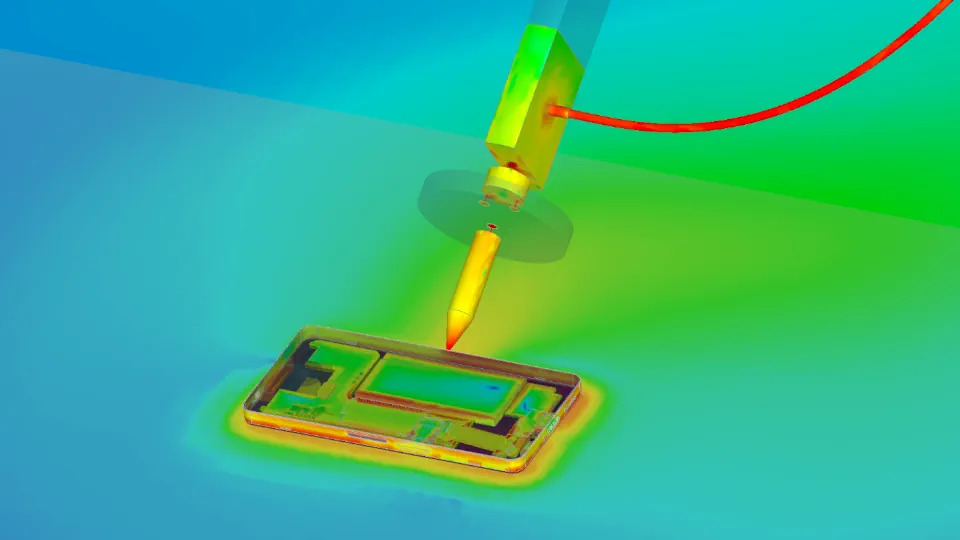
Certification
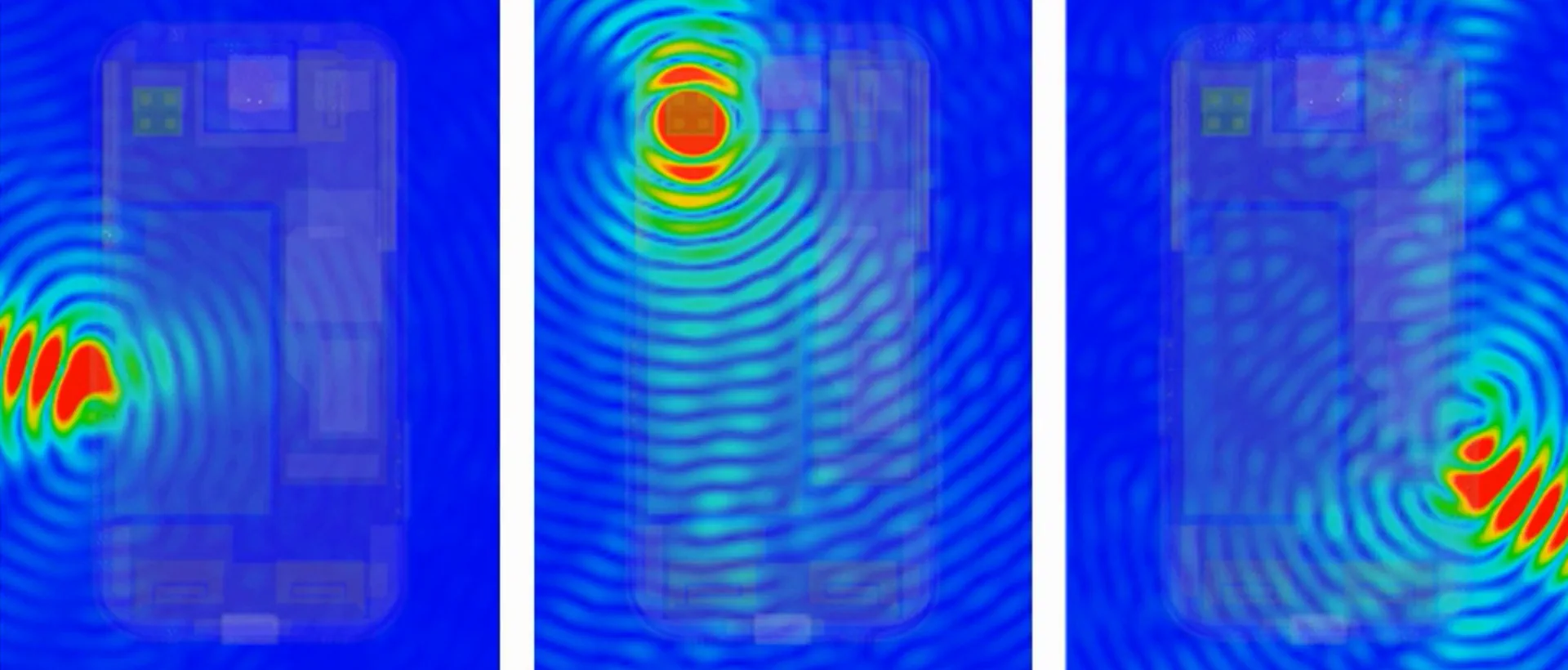
Certifications for connected devices are essential benchmarks for safety, performance, and environmental sustainability. Specific certifications, such as SAR (Specific Absorption Rate) and MPE (Maximum Permissible Exposure), ensure devices operate within safe limits of electromagnetic field exposure to protect users. EMC (Electromagnetic Compatibility) and EMI (Electromagnetic Interference) certifications attest to a device's ability to function smoothly without interfering with nearby devices or being susceptible to interference. ESD (Electrostatic Discharge) certification demonstrates a device's resilience to sudden high voltage surges, while certifications for waterproofing and dust ingress, such as the IP67 and IP68 standards, verify a device's resistance to environmental contaminants. The ruggedization and eco-design standards, including the new ESPR (European Regulation on Ecodesign for Sustainable Products), assess a product's durability and environmental impact. Battery certifications, guided by standards like UN 38.3 and UL 2054, ensure safety and reliability in energy storage components. Simulation helps develop connected devices that meet certification standards.
Start Your Journey
The world of Connected Systems Simulation is changing. Discover how to stay a step ahead with SIMULIA
FAQ on Connected Systems Simulation
Innovation is vital in consumer technology hardware because it ensures survival in a fiercely competitive market. Launching new smart devices means contending with tech giants and agile startups. With record-high R&D budgets, device manufacturers are investing heavily in new product development to meet the demands of 5G and future 6G technologies. These advancements necessitate regular design updates and adherence to stringent standards like those from the FCC and European Ecodesign. Virtual prototyping helps cut costs and reduce risks by ensuring new products meet specifications and regulatory requirements. For more information, download our ebook on sustaining competitiveness in tech hardware innovation.
Multiphysics simulation is a method used in engineering to analyze the performance of a design by creating a Virtual Twin of the device. This approach allows engineers to simulate various physical aspects, such as structural stress, electromagnetic fields, fluid behavior, and vibroacoustics, without the need to construct and test a physical prototype. By integrating different fields of physics, engineers can optimize performance, identify issues, and make informed design decisions. Multiphysics simulation helps balance trade-offs between different subsystems, ensuring rapid turnaround of optimal designs and faster market entry
For more detailed information, read our blog "Why the High-Tech Industry NeedsMultiphysics Simulation".
Electronics are fundamental to modern industry and business operations, enabling everything from production to communication. In offices and manufacturing, complex electronic systems are crucial for efficient operations. These systems rely on high-speed data movement, both on-premise and through cloud computing. Key components like semiconductors, printed circuit boards (PCBs), and basic electronic components such as transistors, resistors, and capacitors, form the backbone of these systems. The reliability and low latency of connections are also critical, especially in data centers and smart factories. For more in-depth information, download our high-speed electronics whitepaper.
Yes, 5G communications can interfere with air traffic. The Federal Communications Commission (FCC) granted the mobile wireless industry the C-Band spectrum (3.7 – 3.98 GHz) for 5G transmissions, which is adjacent to the spectrum used by radar altimeters (4.2 – 4.4 GHz). Radar altimeters are crucial for aircraft safety systems, including terrain proximity, autothrottle, and collision avoidance. The aviation industry had informed the FCC of the need to protect radar altimeters from 5G interference. Consequently, the Federal Aviation Administration (FAA) issued an Airworthiness Directive revising landing requirements at airports where 5G interference could occur, affecting around 2,500 aircraft in the US and 8,000 worldwide. Hence, mitigating 5G interference is essential for both aircraft safety and the economic viability of 5G deployment.
Read more in our blog "Tackling 5G Aircraft Interference with Electromagnetic Simulation"
Also Discover
Learn What SIMULIA Can Do for You
Speak with a SIMULIA expert to learn how our solutions enable seamless collaboration and sustainable innovation at organizations of every size.
Get Started
Courses and classes are available for students, academia, professionals and companies. Find the right SIMULIA training for you.
Get Help
Find information on software & hardware certification, software downloads, user documentation, support contact and services offering

